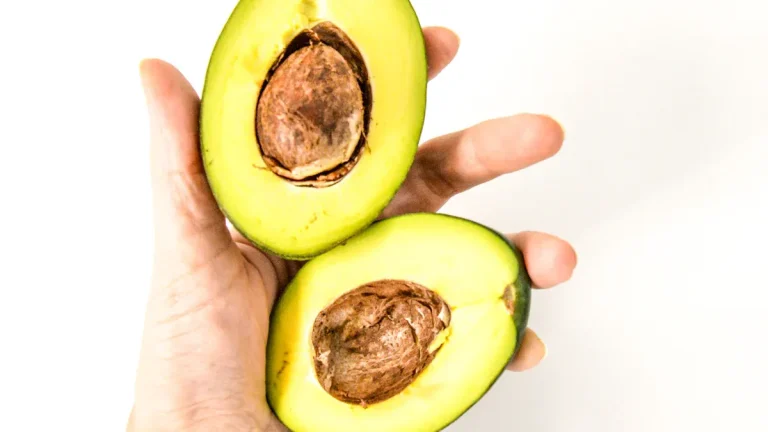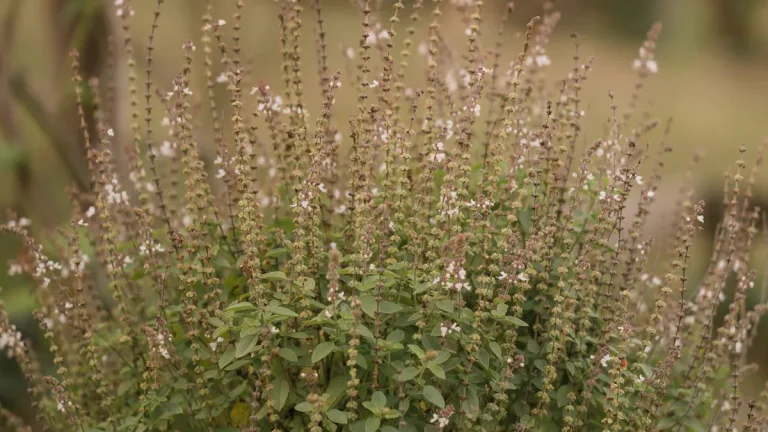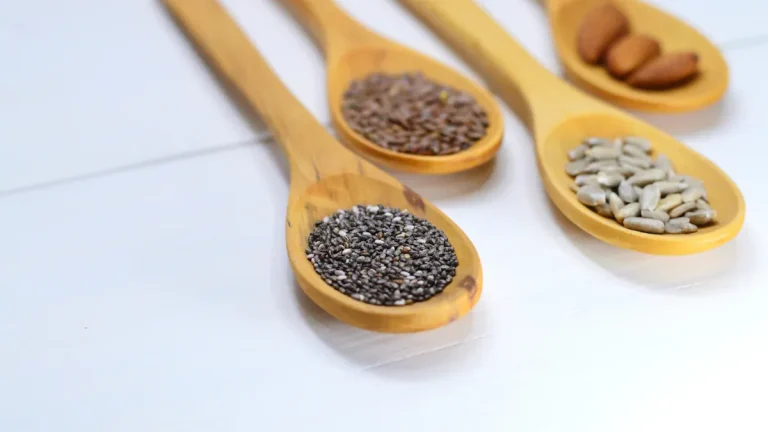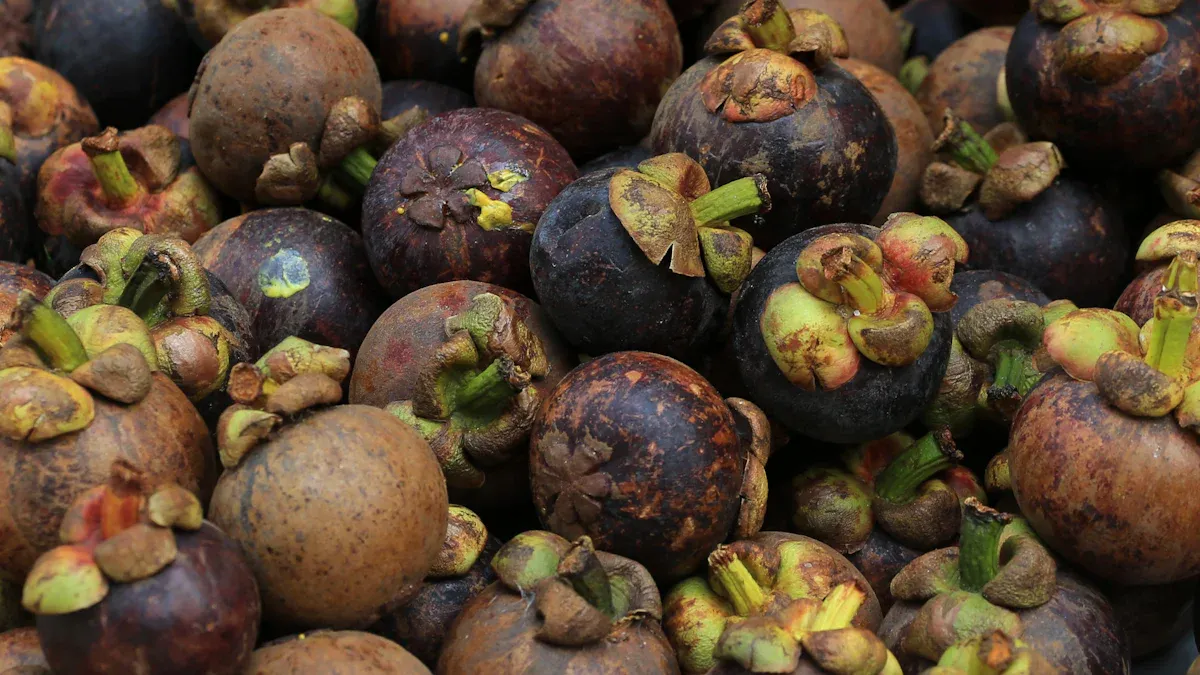
You might know mangosteen as the queen of fruits, famous for its tropical roots and unique flavor. This mangosteen fruit often shows up in markets with its thick purple rind and soft white flesh. Take a look at how food experts describe it:
Aspect | Description |
|---|---|
Appearance | Round, purple skin with tender segments of white flesh inside. |
Flavor Profile | Sweet and juicy, with hints of lychee, strawberry, and peach. |
Mangosteen grows mostly in Asia, but India leads global production. You can find mangosteen in places like Indonesia, China, Mexico, and Thailand. People value mangosteen for its taste and health benefits.
India produced 43% of the world’s fresh mangosteen in 2023.
Asia harvested over 41 million metric tons of mangosteen in 2021.
Key Takeaways
Mangosteen is known as the queen of fruits due to its unique flavor and royal history, making it a delightful addition to your diet.
This fruit is rich in antioxidants, which help protect your body from damage and support overall health.
Regular consumption of mangosteen can boost your immune system and reduce inflammation, promoting better health.
Mangosteen may aid in weight management and blood sugar control, making it beneficial for those looking to maintain a healthy lifestyle.
Enjoy mangosteen fresh, in smoothies, or as a topping for desserts to maximize its health benefits and delicious taste.
What is Mangosteen?
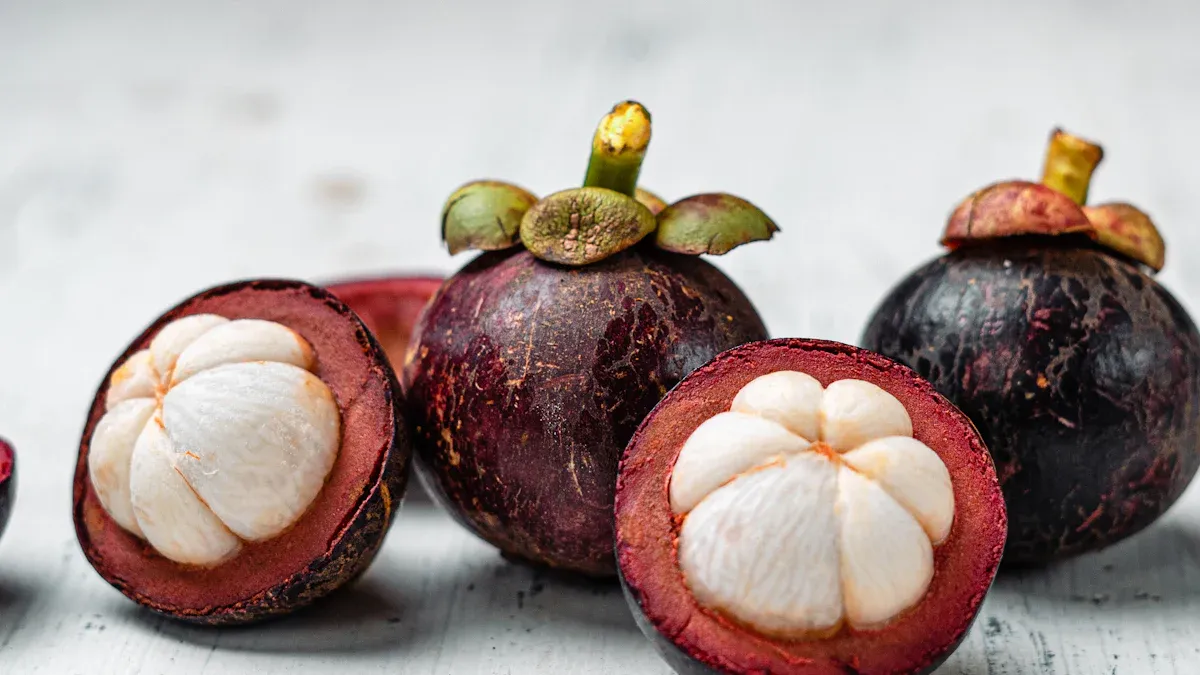
Origin
You can trace the mangosteen fruit back to Southeast Asia, where it grows in warm, humid climates. Thailand, Indonesia, and Malaysia lead the world in producing and exporting mangosteen. Thailand stands out, sending most of its harvest to China. In 2023, Thailand exported over 248,000 tons of mangosteen, valued at more than 500 million USD. You will find mangosteen fruit in tropical regions, often in local markets and gardens. Botanists classify mangosteen as Garcinia mangostana, part of the Clusiaceae family. The plant can reach up to 31 feet tall and features thick, glossy leaves and large rose-pink flowers.
Characteristic | Description |
|---|---|
Scientific Name | Garcinia mangostana |
Family | Clusiaceae |
Height | Up to 9.5 meters (31 feet) |
Leaf Characteristics | Thick, dark green, glossy, 15–25 cm (6–10 inches) long |
Flower Characteristics | Large rose-pink flowers |
Fruit Description | Thick, hard, deep red rind with snow-white flesh in segments |
Appearance
When you see mangosteen, you notice its round shape and deep purple skin. The rind feels smooth and firm, making it hard to open without a knife. Inside, you discover soft, white segments that look like mandarin orange slices. The pulp divides into sections, each one tender and juicy. Mangosteen stands out from other tropical fruits because of its thick skin and delicate flesh. The fruit is about the size of a tangerine or satsuma. Some people use the purple rind to make tea.
Tip: If you want to pick a ripe mangosteen, look for a fruit with glossy skin and no cracks.
Taste
You taste mangosteen and find a sweet, tangy flavor with hints of peach, vanilla, and citrus. Many people compare its taste to lychee, pineapple, and strawberry. The white flesh melts in your mouth, offering a mild and refreshing experience. Consumers rate the flavor profile of mangosteen as moderately preferred among exotic fruits. The balance of sweetness and tartness makes it popular in desserts and juices.
Mangosteen has a flavor profile rating of 2.92 out of 5.
Most people describe the taste as tropical, sweet, and slightly floral.
Queen of Fruits
Nickname Story
You may wonder why mangosteen is called the queen of fruits. The story goes back to the time of Queen Victoria in England. People say she loved exotic foods and had a special fascination with mangosteen. Some rumors even claimed she would grant knighthood to anyone who could bring her this rare fruit. This connection to royalty helped mangosteen earn its famous nickname. The fruit’s arrival in Europe during her reign made it even more popular. Many people started calling mangosteen the queen of fruits because of its royal reputation and unique qualities.
Queen Victoria’s interest in mangosteen made it famous in Europe.
Stories about knighthood and royal gifts added to its legend.
The nickname queen of fruits reflects both its taste and its link to history.
Significance
You see mangosteen celebrated in many Southeast Asian cultures. The queen of fruits holds a special place in traditions and festivals. In Thailand, people give mangosteen as a gift during holidays to show abundance. In Malaysia and Indonesia, you find mangosteen at festivals, reminding everyone of their farming roots. Folklore and legends about mangosteen’s magical properties add to its mystery. The fruit’s role in celebrations and stories shows why people call it the queen of fruits.
Cultural Aspect | Description |
|---|---|
Symbol of Abundance | In Thailand, mangosteen is given as a gift during the holiday season, symbolizing abundance. |
Role in Celebrations | In Malaysia and Indonesia, it is popular during festivals, reminding people of agricultural heritage. |
Folklore and Legends | Stories about its origins and magical properties are passed down, adding to its cultural mystique. |
You discover that mangosteen’s nickname is not just about taste. The queen of fruits stands for history, culture, and tradition. When you enjoy mangosteen, you join a story that connects people across the world.
Mangosteen Benefits
Antioxidant Properties
You discover that mangosteen is rich in antioxidants, which help protect your body from damage caused by free radicals. The fruit contains powerful compounds like xanthones, especially α-mangostin and γ-mangostin. These compounds make mangosteen one of the most effective antioxidant foods. Scientists use several methods to measure antioxidant properties, such as DPPH and ABTS assays. Mangosteen peel shows higher antioxidant power than many other fruit peels.
Antioxidant Property Type | Methods Used | Findings |
|---|---|---|
Free radical scavenging | DPPH, ABTS, Superoxide anion radical, Nitric oxide radical | Mangosteen peel shows higher antioxidant power than many fruit peels. |
Chelating ability | Ferrous ion chelating activity | Significant chelating ability observed. |
Reducing power | FRAP, Cytochrome c reducing capacity | Higher reducing power compared to other fruit peels. |
Lipid oxidation inhibition | TBA assay, FTC | Effective in inhibiting lipid oxidation. |
You see that mangosteen peel extract exhibits better antioxidant activity than persimmon, banana, coconut, and dragon fruit. The high concentration of α-mangostin (69.1%) and γ-mangostin (17.6%) in mangosteen makes it a top choice for antioxidant protection.
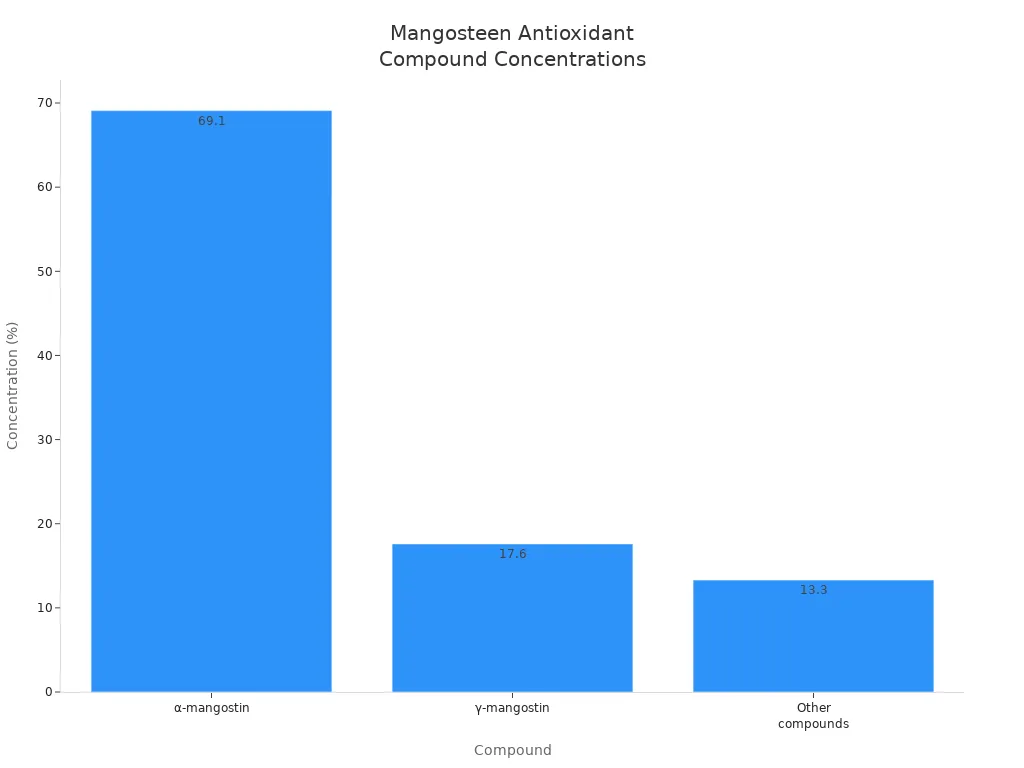
Immune Support
Mangosteen boosts immunity by increasing the activity of immune cells. Clinical trials show that people who consume mangosteen have higher levels of T-helper cells and CD4/CD8 double-positive T-cells. You also notice a reduction in serum C-reactive protein, which means less inflammation. Mangosteen increases serum complement C3 and C4, and raises IL-1α and IL-1β concentrations. These changes help your body fight infections and stay healthy.
Immune Function Measure | Experimental Group (Mangosteen) | Placebo Group | P-value |
|---|---|---|---|
Peripheral T-helper cell frequency | Increased | Baseline | 0.020 |
Serum C-reactive protein concentration | Reduced | Baseline | 0.014 |
Peripheral CD4/CD8 double-positive T-cell | Increased | Baseline | 0.038 |
Serum complement C3 | Increased | Baseline | 0.017 |
Serum complement C4 | Increased | Baseline | 0.031 |
Serum IL-1α concentration | Increased | Baseline | 0.006 |
Serum IL-1β concentration | Increased | Baseline | 0.040 |
Overall health status improvement | More reported | Less reported | 0.001 |
Anti-Inflammatory
You benefit from mangosteen’s anti-inflammatory properties. The xanthones α-mangostin and γ-mangostin help reduce inflammation by lowering the expression of inflammatory genes. These compounds modulate key pathways like MAPK and NF-κB. Human studies show clinical improvement in periodontal inflammation after using mangosteen pericarp extract. Animal studies also confirm that mangosteen reduces swelling and inflammation in mice.
α-mangostin inhibits oxidative damage by human low-density lipoproteins.
Mangosteen extract improves inflammation in periodontal pockets.
Carrageenan-induced mice paw edema model shows anti-inflammatory effects of mangostins.
Anticancer Potential
Mangosteen is recognized as one of the top cancer-fighting foods. You find that mangosteen benefits include fighting cancer by inhibiting the growth of cancer cells. Studies show that mangosteen pericarp extracts stop the proliferation of breast, oral, and cervical cancer cells. The extracts induce apoptosis, which means they help kill cancer cells.
Study | Findings |
|---|---|
Moongkarndi et al., 2004a | Crude methanolic extract from mangosteen pericarp significantly inhibited proliferation of SKBR3 breast cancer cells with an ED50 of 9.25 ± 0.64μg/ml and induced apoptosis. |
Moongkarndi et al., 2004b | Ethanolic extract from mangosteen pericarp showed anti-proliferative activity on SKBR3 cells with an IC50 of 15.45 ± 0.50 μg/ml. |
Asian Pac J Cancer Prev, 2020 | Cytotoxic effects of mangosteen pericarp extracts observed on oral and cervical cancer cells. |
Mangosteen extracts show antitumor activity in leukemia, breast, gastric, pancreatic, urinary bladder, liver, colon, cervical, and oral cancer. You see that mangosteen can fight cancer and may become a valuable part of cancer treatment in the future.
Nutrient-Rich
Mangosteen nutrition supports your health in many ways. The fruit provides energy, carbohydrates, protein, and fiber. You get vitamins like vitamin C, folates, niacin, and minerals such as calcium, iron, and potassium. Mangosteen contains no cholesterol and very little fat.
Nutrient | Value per 100 g | Percent of RDA |
|---|---|---|
Energy | 73 Kcal | 3.5% |
Carbohydrates | 17.91 g | 14% |
Protein | 0.41 g | 1% |
Total Fat | 0.58 g | 3% |
Cholesterol | 0 mg | 0% |
Dietary Fiber | 1.8 g | 4.5% |
Folates | 31 µg | 8% |
Niacin | 0.286 mg | 2% |
Vitamin C | 2.9 mg | 5% |
Sodium | 7 mg | 0.5% |
Potassium | 48 mg | 1% |
Calcium | 12 mg | 1.2% |
Iron | 0.30 mg | 4% |
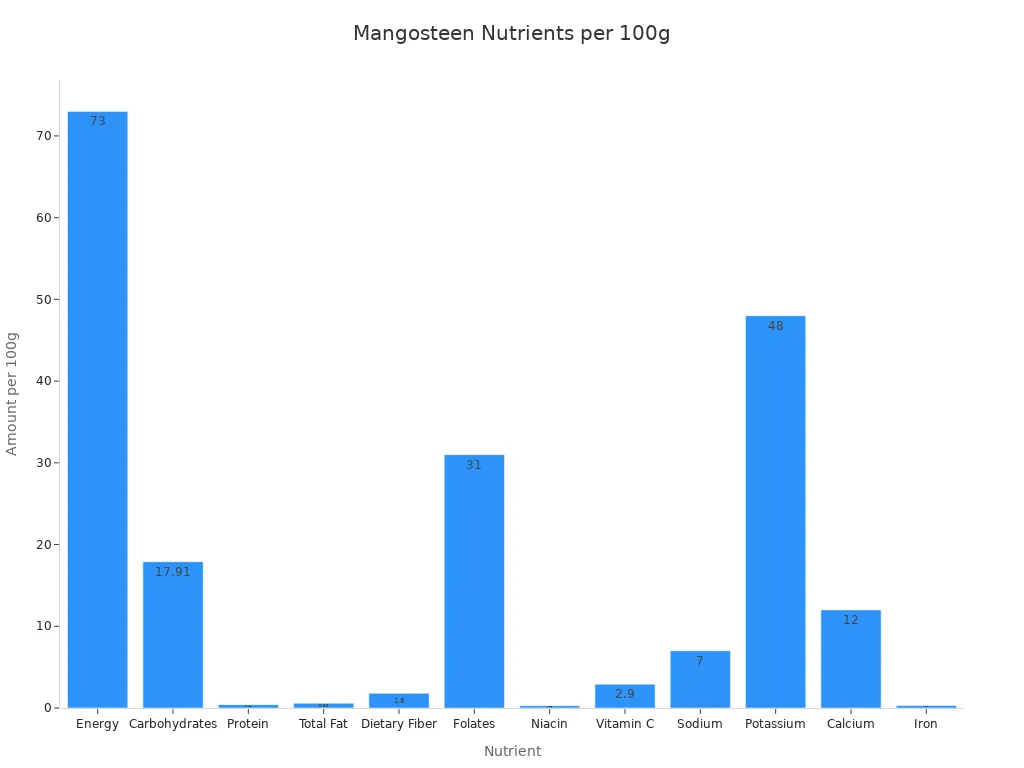
Heart Health
Mangosteen benefits your heart by lowering inflammation and reducing cholesterol. Studies show that mangosteen juice lowers C-reactive protein levels, which means less risk of heart disease. You also see a reduction in LDL cholesterol and blood pressure after consuming mangosteen. Alpha-mangostin helps reduce lipid peroxidation during heart attacks. Mangosteen protects heart health and helps you boost heart health.
Mangosteen juice lowers LDL cholesterol and blood pressure.
Alpha-mangostin reduces serum total cholesterol and triglycerides.
Mangosteen juice lowers inflammation markers, which may reduce heart disease risk.
Blood Sugar Control
You find that mangosteen controls diabetes by improving glycemic control. Extracts from Garcinia mangostana help lower blood glucose levels in diabetic models. γ-mangostin enhances insulin sensitivity and promotes glucose uptake. It also inhibits enzymes involved in carbohydrate digestion, which helps regulate blood sugar. Clinical studies show that mangosteen improves insulin resistance in obese patients, although more research is needed for diabetic patients.
Note: Mangosteen may help manage diabetes, but you should consult your doctor before using it as a treatment.
Weight Management
Mangosteen benefits include helping you manage your weight. Studies show that mangosteen supplementation leads to reduced body weight and food intake in obese rats. The fruit’s fiber content increases satiety, making you feel full longer. Mangosteen improves lipid profiles and decreases fat accumulation in the liver. In clinical studies, mangosteen helps reduce insulin levels and increases HDL cholesterol, supporting healthy weight management.
Mechanism | Description |
|---|---|
Body Weight Reduction | GMF supplementation led to reduced body weight and food intake in obese rats, indicating a direct effect on weight management. |
Metabolic Improvements | The study showed improvements in lipid profiles and a decrease in hepatic fat accumulation, suggesting metabolic benefits. |
Fiber Content | The high fiber content in GMF may enhance satiety, contributing to reduced food intake and weight loss. |
Bioactive Compounds | Xanthones and other polyphenols in mangosteen may help normalize metabolic abnormalities, supporting weight management. |
Skin Health
Mangosteen supports skin health by providing antioxidants and anti-inflammatory benefits. Studies show that mangosteen peel extract has strong antioxidant capacity and protects against enzymes that cause skin aging. Xanthones help protect your skin from environmental damage and reduce visible signs of aging. Mangostanin, a purified xanthone, is effective in cosmeceutical products for skin vitality. Mangosteen extracts also act as photoprotective agents against UVB damage and improve skin elasticity.
Xanthones provide antioxidant and anti-inflammatory benefits.
Mangostanin improves skin vitality and radiance.
Mangosteen extracts protect against UVB damage and improve elasticity.
Pain Relief
You can use mangosteen for pain relief due to its anti-inflammatory properties. Mangostin, a compound in mangosteen, inhibits pro-inflammatory cytokines and may help reduce pain. Traditional medicine uses mangosteen rind for infections, wounds, and inflammation. Scientific studies suggest that mangosteen xanthones contribute to pain relief, although more clinical evidence is needed.
Tip: Mangosteen juice may help with pain, but always check with your healthcare provider before starting any new treatment.
Anti-Microbial
Mangosteen benefits include strong anti-microbial properties. Extracts from Garcinia mangostana, especially α-mangostin and γ-mangostin, show significant anti-bacterial effects against strains like E. coli and MRSA. Ethanolic extracts have bactericidal potential, and γ-mangostin’s activity is comparable to some antibiotics. Mangosteen helps protect you from harmful bacteria and supports overall health.
α-mangostin and γ-mangostin show the strongest anti-bacterial activity.
Ethanolic extracts are more effective than aqueous extracts.
Mangosteen compounds help fight infections.
Healthy Aging
Mangosteen supports healthy aging by reducing inflammation and oxidative stress. α-mangostin lowers inflammation in adipose tissue, which helps prevent age-related metabolic problems. γ-mangostin reduces oxidative stress in the liver by activating antioxidant responses. These actions help you maintain better health as you age. Mangosteen may also improve insulin resistance and lipid levels, supporting longevity.
Block Quote: Mangosteen’s powerful health benefits make it a valuable addition to your diet for healthy aging and overall wellness.
Enjoying Mangosteen
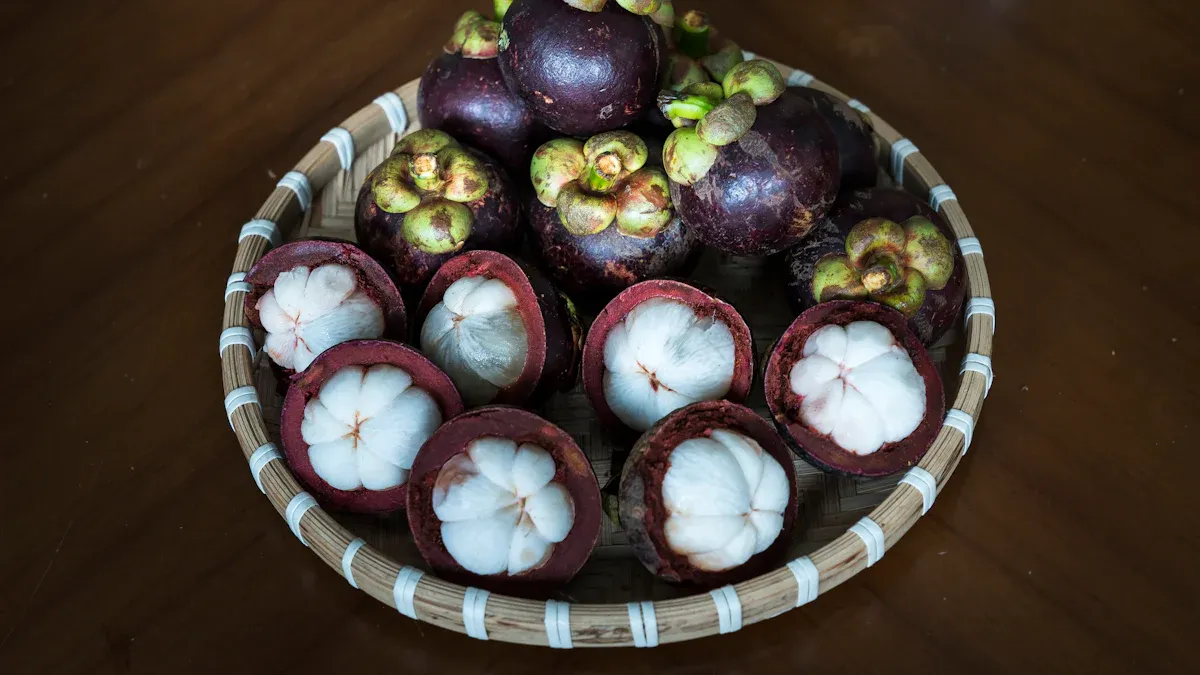
How to Select
You want to choose the best mangosteen when you visit the market. Look for fruits with a deep purple color and glossy skin. The rind should feel firm but not rock hard. Avoid mangosteen with cracks or dry spots. Gently press the fruit. If it gives slightly, you know it is ripe. The green stem on top should look fresh. A dried stem means the mangosteen is old. You can count the flower-shaped marks at the bottom. More marks often mean more juicy segments inside.
Tip: Pick mangosteen with no blemishes and a fresh stem for the sweetest taste.
How to Eat
You can enjoy mangosteen in several ways. Use a small knife to cut around the middle of the fruit. Twist gently to open it. Inside, you find soft white segments. Eat them fresh for the best flavor. Many people like to chill mangosteen before eating. You can add mangosteen to fruit salads or blend it into smoothies. Some cultures make juice from mangosteen. Others use the rind in traditional remedies. Here is a table showing popular methods for eating mangosteen:
Method | Description |
|---|---|
Fruit | Eaten fresh as a fruit |
Juice | Made into juice |
Traditional Medicine | Used in various traditional remedies |
Diet Tips
You can add mangosteen to your diet in simple ways. Slice mangosteen and mix it with other tropical fruits. Try mangosteen in yogurt or oatmeal for breakfast. Blend mangosteen with ice and a splash of lime for a refreshing drink. Use mangosteen as a topping for desserts. You can also freeze mangosteen segments for a cool snack. Mangosteen works well in both sweet and savory dishes. You get vitamins, fiber, and antioxidants with every serving.
Block Quote: Mangosteen makes your meals more colorful and nutritious. Try new recipes and enjoy the health benefits.
You now know why mangosteen is called the queen of fruits. Mangosteen stands out for its rich taste, unique history, and many benefits. When you eat mangosteen, you get nutrients that support your health. Mangosteen offers antioxidants, vitamins, and fiber. You can add mangosteen to your meals in many ways. Try mangosteen and see how it fits into your daily routine. Exploring mangosteen helps you discover new flavors and supports a healthy lifestyle. 🍈
FAQ
Is mangosteen safe for everyone to eat?
Most people can eat mangosteen safely. If you have allergies to tropical fruits, check with your doctor first. Pregnant or breastfeeding women should ask a healthcare provider before eating large amounts.
Can you eat mangosteen seeds or rind?
You should not eat the seeds or rind. The white flesh is the edible part. The rind tastes bitter and feels tough. Some people use the rind in traditional remedies, but you should not eat it raw.
How do you store fresh mangosteen?
Store fresh mangosteen in a cool, dry place. You can keep it in the refrigerator for up to one week. Avoid washing the fruit until you are ready to eat it.
Does mangosteen interact with medications?
Always talk to your doctor if you take medicine. Mangosteen may affect how some drugs work, especially blood thinners or diabetes medicine.

